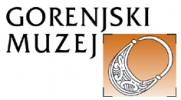Blueberry rakes
Edible berry picking has been a part of life since ancient times. Initially the aim was simply to supplement the diet, but with the introduction of railways in the second half of the 19th century and the growth of towns the commercial importance of berry picking grew. The ever increasing demands of the market and the processing industry led to better organised forms of trade and, after World War Two, to export. Nowadays, gathering the fruits of the forest is more widespread than in the past, but people collect for their own use rather than for selling. Berry picking is a form of relaxation and leisure activity, combining utility and pleasure.
The material for this booklet was drawn from the testimonies of people living around Udin boršt, a village lying on the north-west edge of the Sora Plain, from the Poljane Valley, Bohinj and other places in the Gorenjska region. The booklet refers mainly to the period after World War Two. For most of the informants, this period represented their school years, when they used to go blueberry picking en masse.
BLUEBERRY PICKING
Blueberries ripen from mid-June onwards. The best and most valuable blueberries, which were plump and sweet, were known in Slovene as ta sive (grey ones). Some blueberry shrubs, particularly growing in shady areas, produced very dark, shiny fruit. These were not valued and the pickers ignored them. Some shrubs produced completely white blueberries that were a speciality and therefore particularly prized.
Blueberries were picked for as long as they grew and people were able to sell them. The picking was done mostly by women with large families, who did not have any other source of income. But the most numerous pickers were children, who in this way earned money for school things, such as notebooks, textbooks, clothes or shoes.
Blueberries that were to be sold needed to look good and were therefore mainly picked by hand. Those gathered with a rake were wetter and fetched a lower price. When picked by hand, a litre of blueberries could be collected in an hour, while with a rake twice the amount was collected in the same amount of time.
Only adults used blueberry rakes, of which there were two kinds. The first was used to pick berries by pulling the rake from the top of the bush towards the picker towards a sieve. With the other type of rake, the picker would first get hold of the bush with his left hand and then gather the berries by pulling the rake upwards through the plant. The blueberries were trapped in the rake and the leaves and other bits were than removed by shaking the rake and blowing on it.
When picked by hand, blueberries were collected in small cups, baskets or cannikins that also served as a measure. They were then emptied into large baskets and hampers. Blueberry quantities were measured mainly in litres, but also calculated in kilogrammes, as cooperatives paid by weight rather than volume. A litre of blueberries weighed one kilo.
Parents taught their children not to eat the blueberries while picking them. Only when the baskets were full or on the way home they were allowed to indulge. The parents knew that if the children ate the blueberries while picking, it would be much more difficult for them to stop and consequently much less fruit would be collected. And less fruit meant less money.
Children often competed to see who would fill their container first, but the initial enthusiasm would soon wane. Younger children in particular quickly grew weary, whereas the slightly older ones were conscious of the fact that their earnings depended on how much fruit they collected. Blueberry picking was a good lesson for young people in persistence, patience, independence and in appreciating hard-earned money.
The effort of a full day’s work, which was constantly calculated into money while picking, was often interrupted by rain. Wet blueberries could not be sold. This is why women used to cover the blueberries with an apron, a cardigan, a blouse or even with fern, while men used their shirts. It did not matter if they themselves got wet, the important thing was that the blueberries stayed dry.
THE USE AND SALE OF BLUEBERRIES
Prior to World War One, blueberry brandy was often made from blueberries alone. This brandy, which was very expensive, was drunk for medicinal purposes or served to guests. Large quantities of blueberries were required and were therefore mainly picked with rakes. Over two hundred litres of blueberries were needed to make six litres of blueberry brandy.
In this period blueberries were also bought by traders who supplied them to larger companies involved in fruit processing and the production of drinks. Women sold blueberries in markets and to households in villages and towns, as well as to hotels in tourist resorts such as Bled and Bohinj.
After World War Two, farming cooperatives began buying blueberries for export to England. Even though they paid badly, the money earned was for many families a welcome source of additional income. This is why practically everyone in need of money used to pick blueberries.
Women also picked some blueberries for use at home. They dried them in order to make blueberry tea, which was considered a good remedy for diarrhoea. Between the two World Wars only a few housewives made blueberry jam, while in many households they did not try it until during World War Two. Men used to enjoy brandy containing soaked blueberries. Children liked them fresh with a sprinkling of sugar. Together with a slice of bread, they made a nice snack. Women also made tea from fresh blueberries, and a sweet blueberry tea with a slice of bread often served as a snack or even the evening meal.

